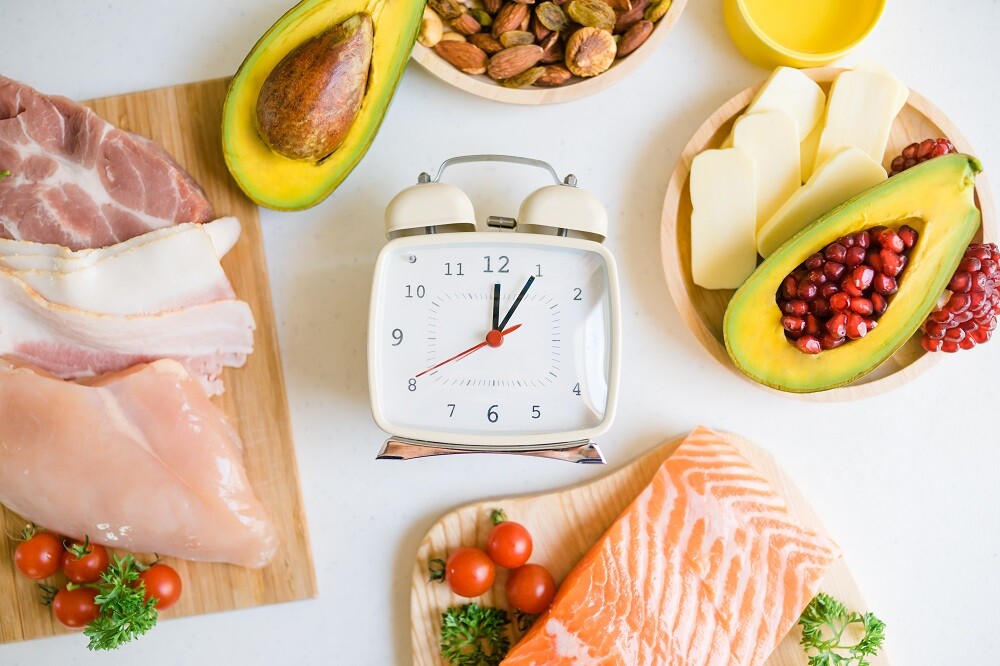As we head into spring, the seasonal produce changes. In season now are lots of dark coloured fruit and vegetables – blueberries, red cabbage, blood o...
As we head into spring, the seasonal produce changes. In season now are lots of dark coloured fruit and vegetables – blueberries, red cabbage, blood oranges and the ever-versatile beetroot. Beetroot can be baked, steamed, juiced or pickled. As well as being an excellent source of vitamin C, folate, potassium and manganese, they are packed full of antioxidants.
Interestingly, the red colour of beetroots comes from phytochemicals called betalains. The research into betalains shows us that:
- They are absorbed easily through the gastrointestinal walls into our system (1,2,3)
- They slow the oxidation process of lipids, which causes cell damage, as well as stopping damage to red blood cells (1,3)
- They slow down the depletion of the important antioxidants vitamin E and glutathione, making beetroot itself a fabulous antioxidant! (4)
This antioxidant activity and the bioavailability of beetroot has suggested to some researchers that regular consumption may offer a protective effect against oxidative stress and cell damage (1). Further research is needed to confirm this hypothesis.
Traditionally, beetroot has long been associated with blood. It is said to improve circulation, reduce blood pressure, have anticancer properties. Beetroot can also contribute to brain health. Nitrates found in beetroot increases blood flow to the brain. One study found that the nitrates in beetroot contribute to increased blood flow to the front of the brain, areas which are associated with dementia and Alzheimer’s Disease. (5)
Traditional Chinese Medicine describes beetroot as being sweet and cold in nature. They are used to help cool the body – indicating that beetroot could be useful when it comes to hot flushes!
There’s also lots of research into beetroot juice and exercise performance. Beetroot increases blood flow and thus helps to move oxygen around the body. It also contributes to energy production and strengthening of muscles. A review of 23 studies (6) suggests that supplementation with beetroot juice can improve cardiorespiratory endurance in athletes (the level at which your heart, lungs, and muscles work together when you’re exercising for an extended period of time). This improves performance at various distances, increasing the time that an athlete is able to work out for and may improve the amount of oxygen a person can use during intense exercise, known as VO2max.
So, now that we know the benefits of beetroot, what can we do with it to include it in our diet?
- Roast it with some pumpkin and make a salad with green leaves, fetta, walnuts and a balsamic dressing
- Juice it with some apple, lime juice and mint leaves
- Steam or pickle it and add it to your home-made burgers
- Cook it and make a dip with a small amount of Greek style yogurt, olive oil and salt and pepper
Hands up who uses only the beetroot bulb. Do you throw away the leaves? Guess what… they’re edible too! They are great sources of vitamins A and K (making them excellent for eye health) and a high in fibre, so they’ll help you to feel full. Use them in stir fries or salads. They can be used as you would kale, spinach or bok choy.
Are there any drawbacks to this quietly confident super-food? Some people report that their urine and stools turn pink after eating beetroot. While this is harmless, it happens in approximately 10% – 14% of people and is due to not absorbing the red pigments and excreting them via the kidneys and bowels instead. Pink urine can also be a sign of iron deficiency, so if you are concerned, consult your healthcare practitioner.
References
1 – Tesoriere L et al, 2004, “Absorption, excretion, and distribution of dietary antioxidant betalains in LDLs: potential health effects of betalains in humans”, Am J Clin Nutr 80 (4): 941-5.
2 – Kanner J, Harel S, Grnait R, 2001, “Betalains-a new class of dietary cationized antioxidants” J Agric Food Chem 49 (11): 5178-85
3 – Tesoriere L et al, 2005, “Distribution of Betalain Pigments in Red Blood Cells after Consumption of Cactus Pear Fruits and Increased Resistance of the Cells to ex Vivo Induced Oxidative Hemolysis in Humans” J. Agric. Food Chem 53 (4): 1266–1270
4 – Tesoriere L et al, 2009, “Cytoprotective effects of the antioxidant phytochemical indicaxanthin in β-thalassemia red blood cells” Journal Free Radical Research 40 (7)
5 – Hendrick B, 2010 “Beet Juice Good for Brain” WebMD, accessed 11 August 2020, <https://www.webmd.com/brain/news/20101103/beet-juice-good-for-brain#1>
6 – Dominguez R et al, 2017, “Effects of Beetroot Juice Supplementation on Cardiorespiratory Endurance in Athletes. A Systematic Review” Nutrients 9 (1): 43
About The Author - AMC Team
Our team consists of doctors, nurses, program assistants, naturopaths and nutritionists that join their wealth of knowledge to offer our patients and website visitors interesting and insightful articles to assist you understand the symptoms you are experiencing and how to relieve them.

